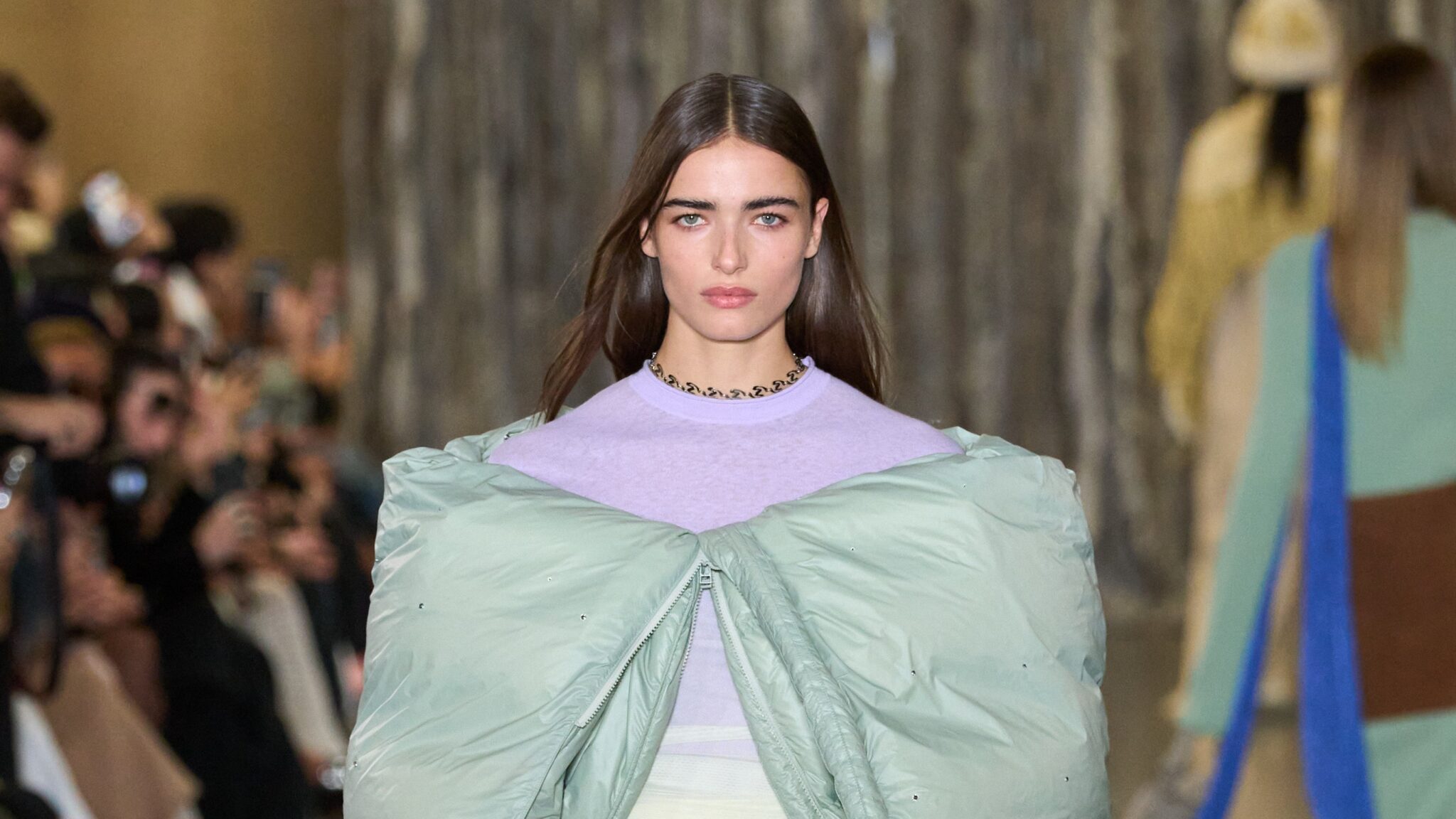Tate Britain today provided a majestic backdrop for the autumn show of Holzweiler from Oslo, the second in London. In contrast to the neoclassical background, the latest collection drew inspiration from the enigmatic worlds of mycelium and fungi. “Then Susanne [Holzweiler, cofounder] visited the museum and saw the beautiful floral installations of artist Anya Gallaccio, known as Preserve beauty, with their theme of decay, she knew this was the perfect location for our show,” creative director Maria Skappel Holzweiler explained during a preview.
It quickly became clear that fungal motifs could be found not only in the silhouettes, but also in the prints, colors and textures of the collection. Take the opening look: a lavender cotton maxi dress, accentuated at the waist with a butter yellow mesh tube topped by a mint puffer worn upside down to evoke the shape of a chanterelle mushroom. Another ensemble (a mesh sheath dress over a shirt and pants) featured a psychedelic swirly print that, when touched, evoked the explosion of delicate puffball mushroom spores. It was completed with an oversized scarf in a pattern that echoed the intricate pattern of mycelium. Boosted puffer coats, some of which grazed the floor, had an ultra-voluminous mushroom-like curve. There were also less literal takes on the theme, such as knitted denim skirt suits and mesh-knit trouser and cardigan sets, along with pristine suede zip-up jackets and crochet off-the-shoulder sweater dresses.
The intention of the menswear collection – which functions as “the brother of womenswear, yet embodies its own distinct lifestyle,” as Maria explained – was to focus on the collector rather than the mushroom itself. Earth-colored suits in shades of chestnut, chocolate and umber were finished with boxy shoulders and relaxed-fit trousers (albeit slimmer than previous seasons). Rugged bouclé vests resembled the texture of lion’s mane mushrooms, while distressed leather and canvas bombers displayed cargo pockets, perhaps suitable for mushroom picking. Overall, the collection leaned toward a darker, muddier aesthetic while staying true to Holzweiler’s utilitarian universe.





